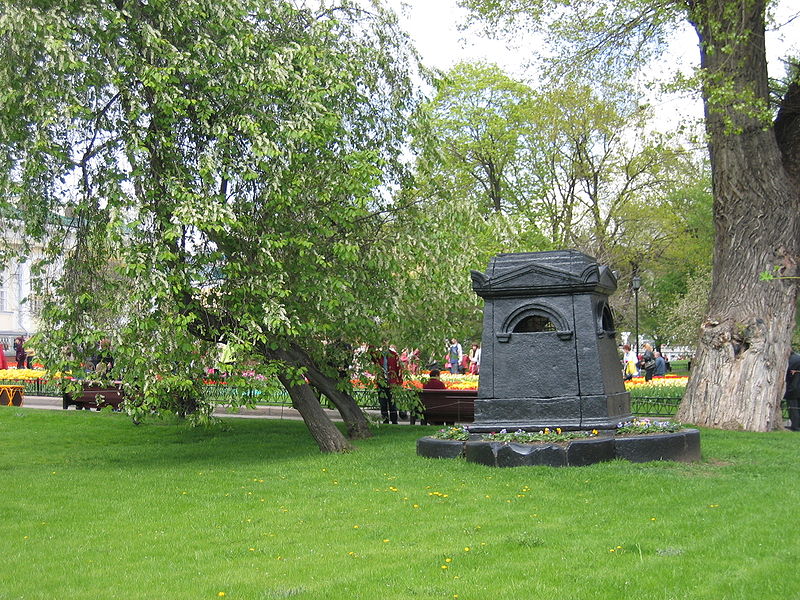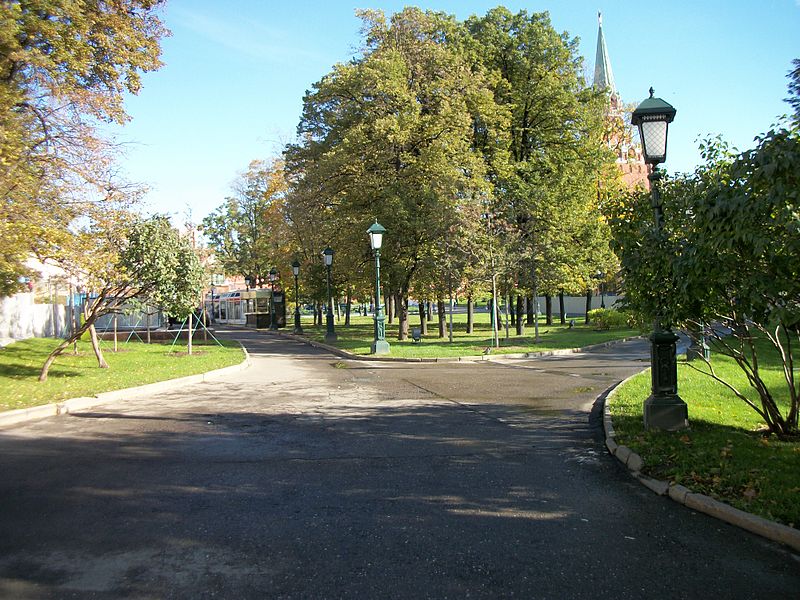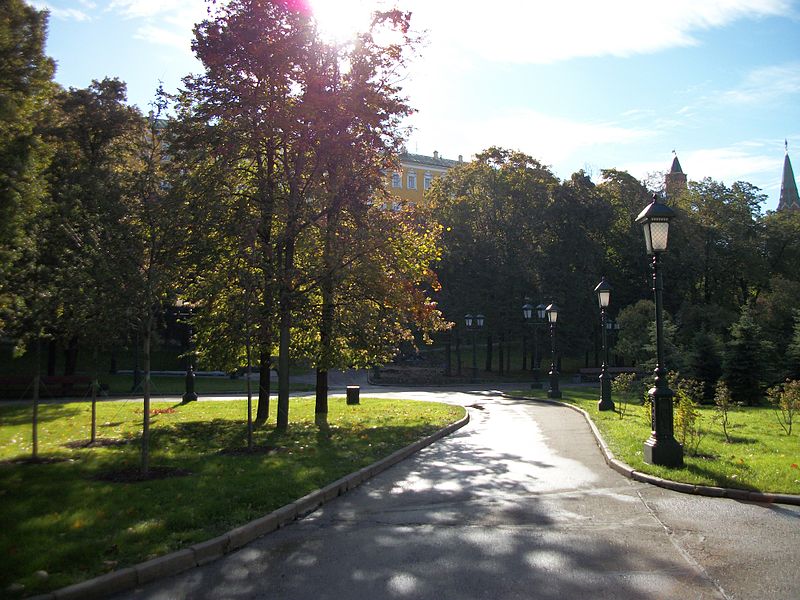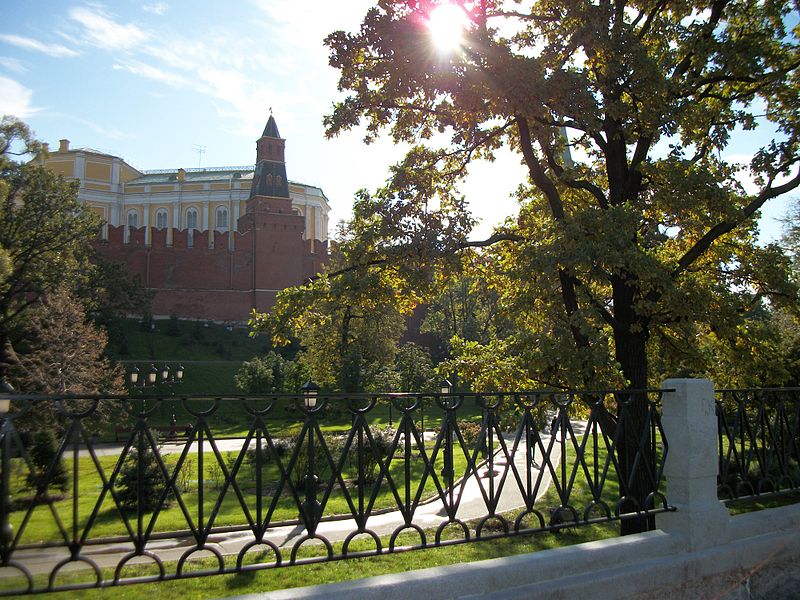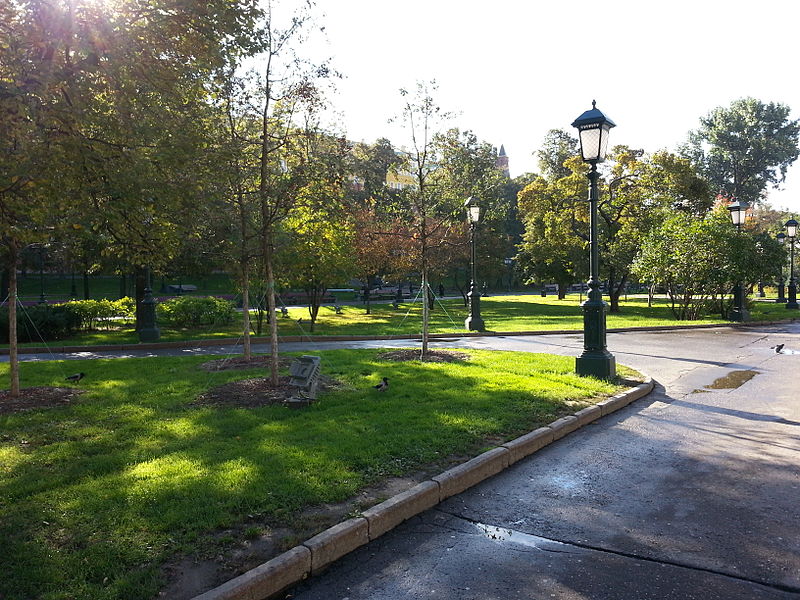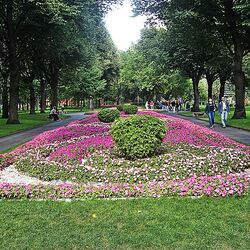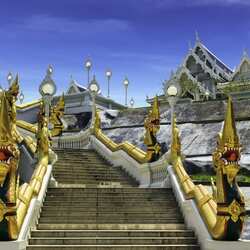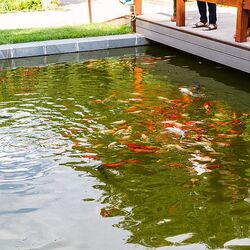Alexander Garden
The Alexander Garden is one of the most famous gardens in Moscow with an area of 10 hectares, located right next to the walls of the Moscow Kremlin and dedicated to Emperor Alexander I.
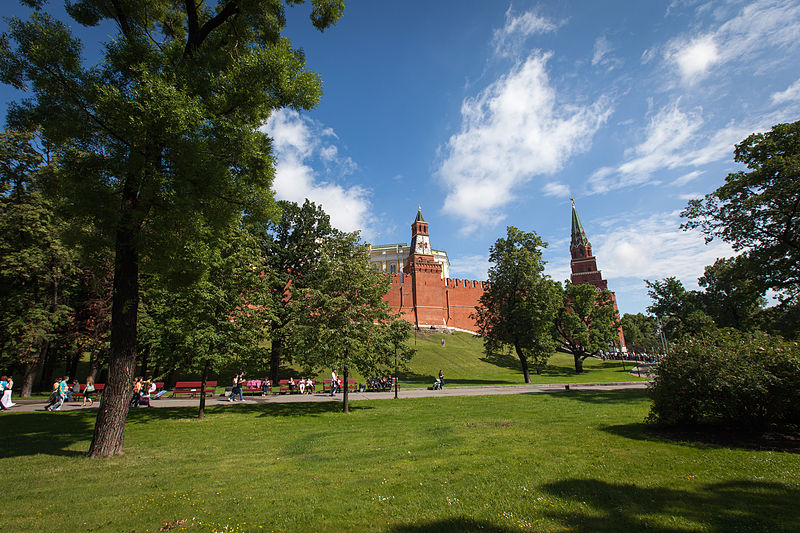
Work on the construction of the garden was carried out in 1819-1823 according to the project of architect Osip Bove on the site where the Neglinka River once flowed. A few years earlier, the river was completely enclosed in a brick pipe. Alexander I ordered the garden to be laid out during the reconstruction project of Moscow after the fire of 1812. When the decree was implemented, 3 gardens appeared: Lower, Middle and Upper, which bear the same name Alexander Garden, however, the boundaries between the gardens are pronounced.
The main attraction of the Upper Garden is the grotto "Ruins", also called the "Italian grotto". This monument was erected as a reminder of the cost of defeating Napoleon's troops. During its construction, fragments of Moscow buildings were used, which were turned into ruins by the French army. Also in the Upper Garden there is another important monument - the Grave of the Unknown Soldier and the Eternal Flame, which is guarded by a guard of honor. In 2010, a stele was unveiled here, which was dedicated to the cities of military glory. There is an obelisk at the main entrance to the garden, erected in honor of the 300th anniversary of the rule of the House of Romanov, but during the revolution it was redone, removing the royal symbols, and dedicated to revolutionaries and socialism theorists. In 2013, the former appearance of the monument was restored. In the Middle Garden, there are ticket offices where you can buy tickets to the Moscow Kremlin museums, and in the Lower Garden there is no walking area and it is inaccessible to the public.

Another important historical landmark is the Kutafya Tower, a branch tower for protecting the walls of the Kremlin, which is the only one that has survived. Initially, its height was 18 meters, but later the lower part was filled in. When the enemy attacked, the gates of the tower were to be closed by a drawbridge, making the Kremlin impregnable. In the 16th and 17th centuries, the Neglinka River surrounded the tower from all sides.
Residents of the capital and visitors to Moscow are always pleased to walk along the manicured alleys, looking at the luxurious flower beds and shrubs. From the shrubs in the Alexander Garden, you can see bushes of lilac, acacia, hawthorn, bird cherry, jasmine, and they all bloom at different times of the year. There are numerous tulip beds in spring and roses in summer.

